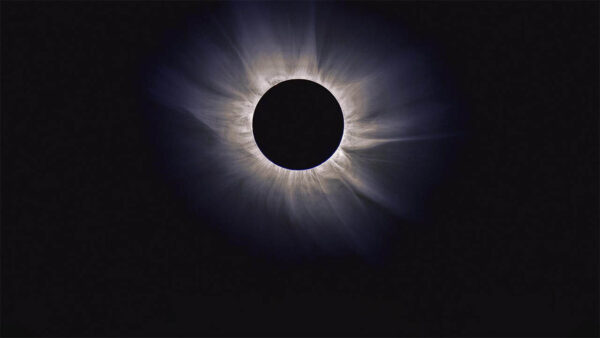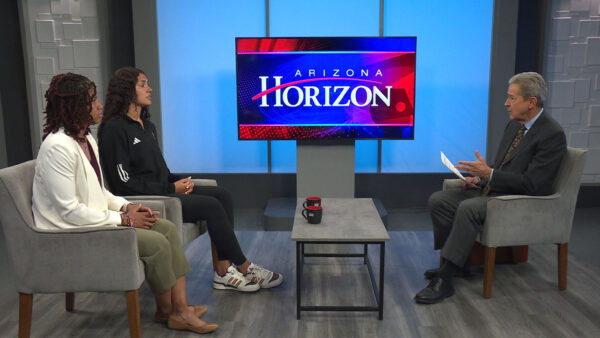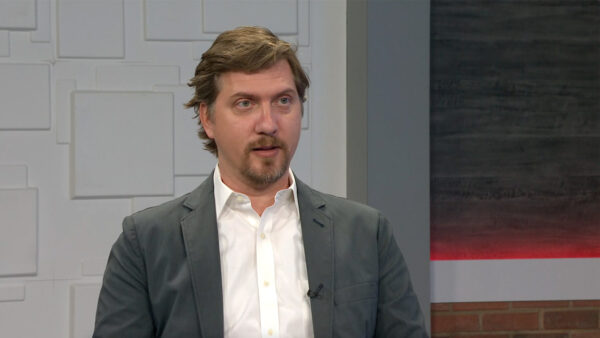The executive director of MyBillofRights.org, Chris Bliss, talks about the nation’s first Bill of Rights monument that is being dedicated on Bill of Rights Day, Saturday, December 15th, 2012 at the Arizona State Capitol.
Ted Simons: This Saturday, 221 years after the bill of rights was adopted, Arizona will become the first state in the nation with a monument honoring that historic document. Arizona's bill of rights monument will be unveiled and dedicated Saturday at 10:00 a.m. at Wesley Bolin Plaza near the state capitol. Earlier I spoke with a man who led the effort to get the monument built - juggler and comedian Chris bliss, the executive director of mybillofrights.org. Thank you for joining us tonight on "Arizona Horizon."
Chris Bliss: Hi, it's a pleasure to be back with you.
Ted Simons: All right. Before we get into the where force of what nots and where this thing is located and everything, what got you started on all this?
Chris Bliss: Well, I just left Los Angeles. I'm a comedian by trade. And I left LA because I was tired of show business. Moved here to Arizona. And I was also disturbed by how divisive the national conversation was and was looking for a common ground project. I have been doing this material, all these arguments over the 10 commandments, this is back in 2003, 2004, about how instead of taking the displays down why don't we put the bill of rights up next to it so people can comparison shop. Because the bill of right gives you and amazing deal - it tells you speak freely, carry a gun, pursue happiness. And then it actually presumes you to be innocent, which my religion won't. That was the joke around it. One day I was walking around in my office thinking about it. I tried to get a couple of othe rpeiple to do it. I said, this would be good idea, wouldn't it? I Googled bill of rights monument. Saw there wasn't a single one anywhere in the United States and thought, that cannot be. It's a great common ground project, conservatives and liberals love large parts of it even though people would argue they don't all love all of it. I was looking to bring people together when they were badly divided. We are just as badly divided, so six years later, here we are.
Ted Simons: And here we are indeed in Arizona. Was it because you were here you decided to focus on Arizona? Any other reason why Arizona would be the first?
Chris Bliss: It was serendipity you might call it. I was doing some radio shows. I was on a radio program that newly elected a ten time statehouse of representatives Kyrsten Sinema. We had a half an hour thing on a radio show and they said do you want to come in and talk about your project? And I was talking about it on air with Kyrsten and she said I'l take that in front of the legislature, you don't need any appropriations. And I went to her office in January and she said, "Chris, if you haven't noticed, we don't exactly run this place. Maybe you should take it to the other side if you need authorization". And I said "Kyrsten, don't be silly. It's the bill of rights. It belongs to all of us. Find one person on the other side, join up with him and I bet everybody comes along for the ride". She reached across the aisle to Karen Johnson. You couldn't find more polar opposites. And that started the template and we got unanimous approval and then it was just the matter of finding the right site. That took a while. They offered us a wonderful site in Bolin Plaza, then it was getting the final approvals and funding.
Ted Simons: Yeah indeed, and now everything is a go for Saturday. Let's get some particulars. Where exactly will this be located?
Chris Bliss: It's in the southwest quadrant of Wesley Bolin Plaza. That's technically the address is 1700 West Washington but it's right across 17th avenue from the state capitol. On the Jefferson side adjacent to the Vietnam memorial on a prominent hillside there. You can see it from everywhere.
Ted Simons: We're looking at one of the monuments here. Describe better for us. We're talking ten slabs for each amendment, correct?
Chris Bliss: Ten individually sculpted limestone monoliths. They are made from single salt cut slabs of limestone. They will last for 100 years. The sculptor and artisan is a guy named Joseph Concannon, one of the top stone artisans in the country. He put this design together as a group of individual monoliths. They are individually carved, they are all beautiful sculptural shapes but are also a grouping on the hill. It speaks straight from the whole concept philosophically of the bill of rights.
Ted Simons: As far as design is concerned you don't want the second amendment to look like a gun, but is there abstract notions behind each slab?
Chris Bliss: Actually there's two things at play. In the first play, some of the amendments are longer in terms of the words; and some are shorter. That comes into play on how large the monoliths are, but also the sculptor's challenge is when you have words on stone to make people want to engage with the wording and then move from stone to stone. So the variance in shape and choices of those shapes is to create movement in it as a single sculpture made up of ten pieces and to each have its own focal point and engage. Then these are not flat surfaces with letter in sand glass. They are contoured. This is a trick he learned when he was lead carver of St. John the Divine in New York. And the result is that they pull you in to engage. You want to read the words. The words are very readable. You can see them from 20 feet away, then you want to move to the next and the next. So I think for kids, just who we really wanted to engage,schoold kids, for these really big blocks of stone; they are really kind of friendly and inviting. They invite you to engage in them. I think it succeeds on that level as sculpture and also to engage people with the words of the document, which is what Joseph really wanted to do.
Ted Simons: With all that going on, what price are we talking about? How much did this cost?
Chris Bliss: Oh this is a miracle. We got it done for under $400,000.
Ted Simons: Wow!
Chris Bliss: And it will be there for 100 years.
Ted Simons: How did you get it done for under $400,000?
Chris Bliss: Well, a lot of people wanted to work with us and cooperate with us. Also the design was built into the design too because it's fairly simple design. The design was not made to be less expensive than other monuments. It was meant to fit the environment. Then we just had a lot of people work with us and we had that comedy concert here back in May. All those great acts came in pro Bono. Sun construction, doing the installation, is donating a large part of their services, a lot of their subcontractors have contributed and the business and legal communities have donated significant funds so we can meet our target. It's got to be the most forgotten commemorative holiday in America.
Ted Simons: And this will obviously help in Arizona. This is going on with a first in the country.
Chris Bliss: First major monument of the bill of rights anywhere.
Ted Simons: Where will the second, third and fourth be?
Chris Bliss: Well we are hoping that this monument will draw attraction too. We have something approved at the Texas state capitol. It's a beautiful design. Significantly more expensive. That's almost a $3 million project because it's a redesign of an entire Plaza. I'm hoping the attention that will be drawn to this and we're getting good national attention and we should have a day that's just about the ideas that made the country great. Just one day a year. Call it national ideas day if you want to call it that. The bill of rights is one of the best ideas that humanity has ever come up with and celebrating it seems to me to be -- it's great ideas that make a great nation and the bill of rights is part of our greatness.
Ted Simons: So with that, last question. You've seen the finished product. We will all see it on Saturday. You put so much of your life, so much effort, so much attention, are you happy with the way it looks?
Chris Bliss: It's beyond my best expectations. I have seen it during the day now. We put lighting on it at night. The stone is so beautiful it's scaled perfectly to the space, the landscaping. It's the first really inviting space over in Wesley Bolin Plaza. I think it will become a major landmark for the state and the city of Phoenix. The mayor, the governor will be there. The chief justice is going to be there. We're going to have ten different individuals each unveiling from one of the amendments while we have a reading over the loudspeakers so the bill of rights will be front and center. We'll also have some fun that way. It's going to be a terrific celebration.
Ted Simons: Well congratulations on this. Good luck Saturday. Thanks for joining us.
Chris Bliss: Thanks and I should mention, 10:00 a.m. Saturday is the dedication.
Chris Bliss:Executive Director, MyBillofRights.org;




















